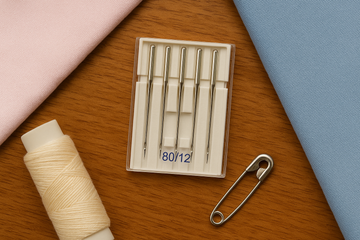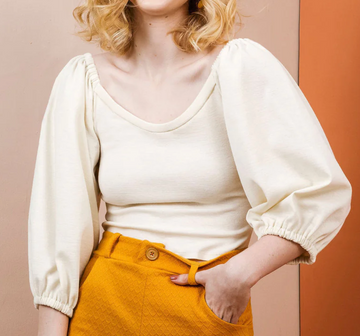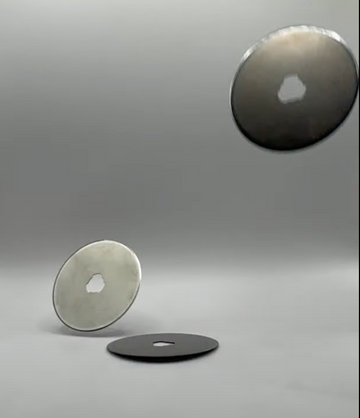Ever stood in the sewing aisle staring blankly at the needle packs, wondering what on earth 80/12 means and why there are just so many different packs? You’re not alone, friend. Let’s untangle the mystery of universal sewing needle sizes: what they do, why they matter, and why my heart belongs to the trusty ol’ 80/12.
🧵 First Off: What Even Are These Numbers?
Sewing needle sizes come in two numbers: the European size and the American size. For example, 80/12 means:
-
80 is the European metric sizing
-
12 is the American version
They both refer to the thickness of the needle shaft. The higher the number, the thicker (and stronger) the needle. The lower the number, the finer and more delicate it is.
🪡 Most Common Universal Needle Sizes & What They’re For
Here’s your cheat sheet:
-
60/8 – Teeny-tiny. Best for very lightweight fabrics like chiffon, organza, or batiste. These needles are basically the Tinker Bell for your sewing machine: dainty, precise, but easy to snap if handled too roughly.
-
70/10 – Great for lightweight wovens and silks. Think blouses, linings, and slippery fabrics that behave like toddlers on a sugar high.
-
80/12 – Ah, my ride-or-die. Perfect for medium-weight fabrics: quilting cottons, poplin, even some knits. If I had a dollar for every time I reached for an 80/12, I’d own an embroidery machine by now. This needle is basically the Goldilocks of sewing: just right.
-
90/14 – Besties with denim, canvas, and twill. When your fabric starts to say, “You sure about this?”, 90/14 says, “Hold my thread.”
-
100/16 and up – For heavy-duty materials like leather, upholstery fabric, and situations where you're basically asking your sewing machine to do powerlifting.
💖 Why I Always Come Back to the 80/12
Listen, I try to branch out. I do. But 80/12 is just so dependable. It’s like your favorite pair of jeans: comfy, gets the job done, and makes you feel like you actually know what you’re doing.
Most of my sewing projects (quilts, billowy dresses, bags, and the occasional “what am I making?” experiments) start with cotton or cotton blends. And 80/12 gets it. It slides through fabric like butter, doesn’t shred my thread, and keeps my stitches looking clean and happy. It’s basically the Swiss Army knife of needles.
🧷 Pro Tips to Keep You Stitchin' Smooth
-
Change your needle every 6–8 hours of sewing. Dull needles = skipped stitches and fabric tantrums.
-
Use the right size for your fabric and thread. Too big? It’ll punch holes like it’s mad at your project. Too small? Your thread may shred faster than my nerves during buttonholes.
-
Keep a needle stash. Organize by size and type so you’re not digging through yelling “WHERE’S MY 80?!”
Final Thread
Next time you’re about to dive into a project, pause and ask yourself: “What would 80/12 do?” Because chances are, that trusty little needle is exactly what you need.
Now go forth and stitch with confidence. And remember: in a world full of needle options, it’s okay to play favorites.
🧵✨
- E






